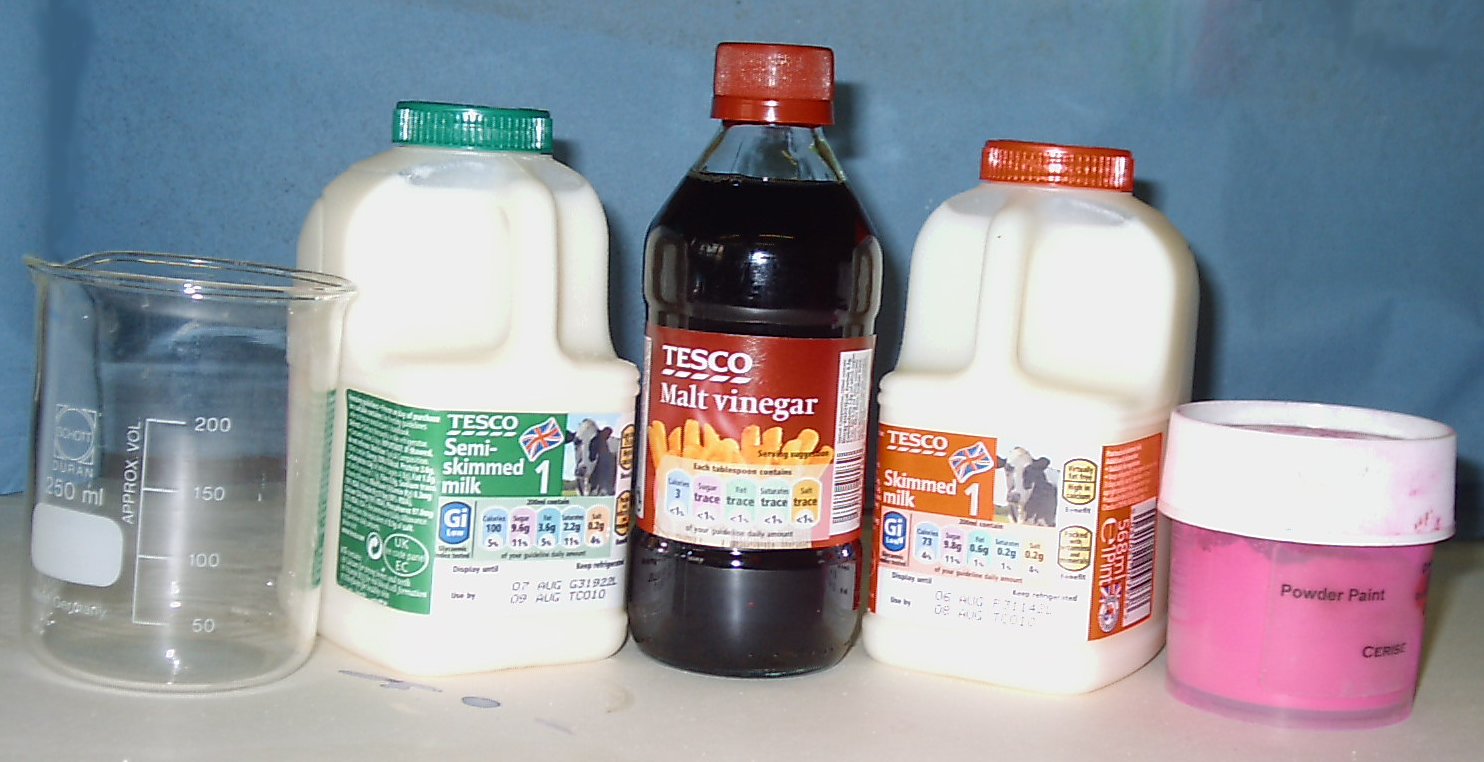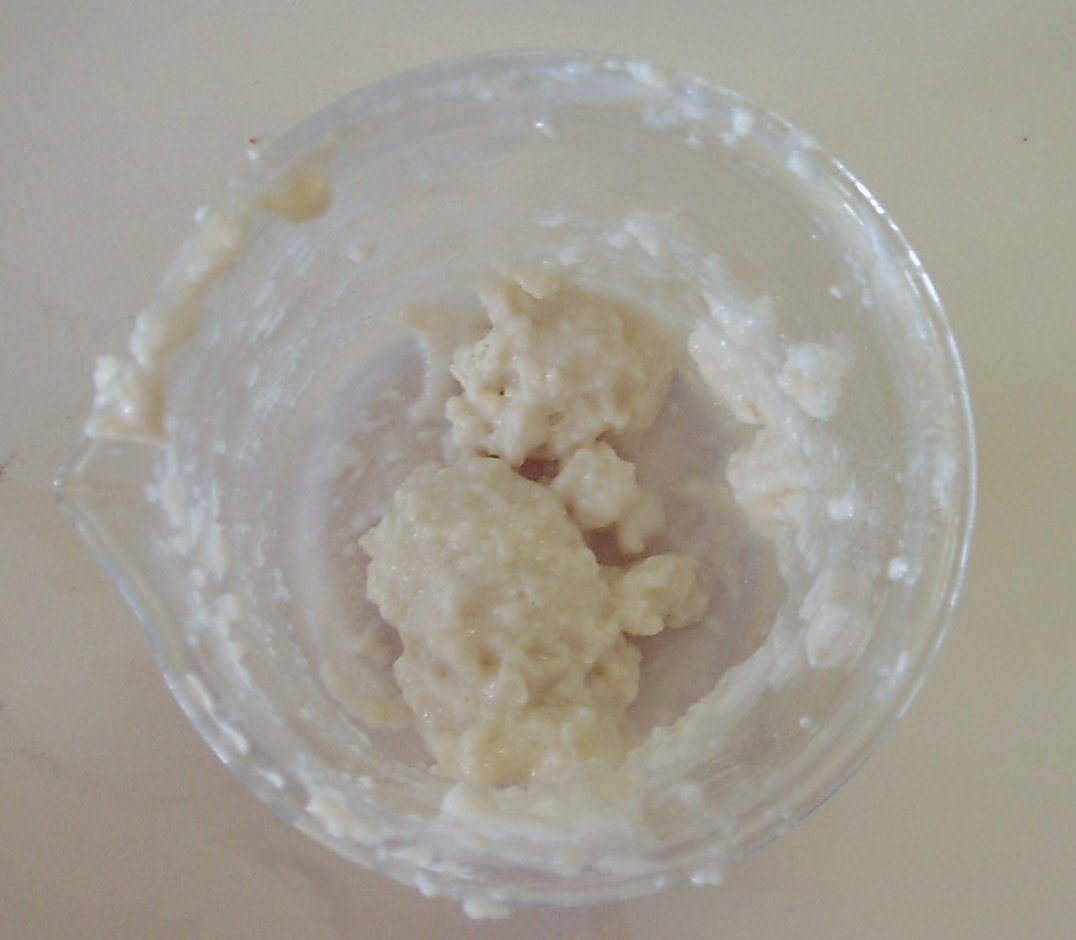Make Your Own Casein Glue/Binder
Aim of Experiment
Casein binder has been used for hundreds of years to bind pigments to make paint. In this experiment you will make the traditional binder.
What You Need

- Jam jar - or similar container
- Skimmed or semi-skimmed milk
- Vinegar
- Tea strainer or sieve
- Bicarbonate of soda
- Pigment - optional (but needed to make your own paint)
Pigment can be obtained from any good art supplier. The easiest pigments to obtain are powder paints. Your art supplier may have a range of natural pigments, which would have been the only pigments available to people in the past. To see where we got our pigments from, and to find on-line suppliers, take a look at our suppliers section.
What To Do

- Half fill a jam jar with skimmed or semi-skimmed milk
- Heat the milk in a microwave for ½ minute, or in a saucepan of water on the stone for 2 minutes. Do not let the milk boil.
- Add three teaspoons of vinegar to the milk, and stir the mixture slowly for 10 minutes. The milk should separate into curds (solid sticky bits) and whey (clear liquid).
- Pour the mixture into a sieve or tea strainer and collect the whey in a container.
- Add a teaspoon of bicarbonate of soda to the whey.
- The sticky white mass obtained is called casein.
- If you wish, you can mix your binder with some pigment to make a paint
The Science
A binder is a substance which is 'sticky', in that it holds things together. Binders are often long chain polymers, which are very long molecules to which pigments can become attached. Polymers are traditionally made by starting with lots of small molecules and reacting them so that they form together into long chains.






